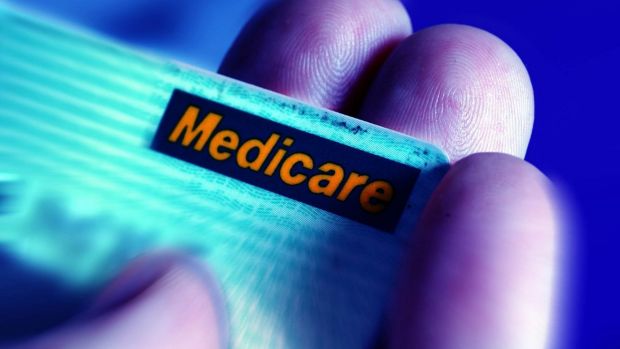EDITORIAL

Medicare costs $19 billion or so a year. The 2 per cent Medicare levy raises about half that. Photo: Peter Braig
The Abbott government’s revised $5 “voluntary” GP co-payment is hardly better than the unfair $7 compulsory version.
Worse, it creates the potential for more unintended consequences that threatening to erode bulk billing, weakening preventive medicine and exacerbating doctor shortages.
The Herald believes the Senate crossbench should stop this revised GP co-payment plan and pressure the government to get health reform right.
It doesn’t even begin to tackle the biggest areas of health system waste and it raises relatively little revenue.
Medicare costs $19 billion or so a year. The 2 per cent Medicare levy raises about half that. This new policy will contribute about $3.5 billion over four years – about the same as the first version – but will bolster budget coffers only once it has raised $20 billion for the Medical Research Future Fund.
As such, the revised co-payment is neither a pressing budgetary necessity nor comprehensive health system reform.
As the Herald said in January when a GP co-payment was being mooted: “Designed equitably, co-payments could reduce costs and improve efficiency in parts of the health system. It is smart policy that those who can afford to pay more for their healthcare should do so, and not expect government subsidies.”
Indeed, the Herald has supported means-testing of the private health insurance rebate – something the Coalition opposes – and backs the Medicare levy on those earning higher incomes. The levy could even be raised.
But instead of examining all health budget reform options and their potential impact, the government is pursuing an untried GP co-payment that presents with most of the same dangerous symptoms we have complained about for 11 months.
Health Minister Peter Dutton admits he wants to save money by reducing the number of people who are bulk-billed for GP visits.
But the evidence suggests bulk billing by GPs delivers close to the best value for money in the health budget. Preventive health advice from GPs also saves taxpayers in the long run by reducing the use of costly specialist and hospital services.
There is one positive in the revised GP co-payment and that is it exempts eight million Australians – concession card holders, people in aged care homes and children under 16, among others.
But many people on low incomes do not have concession cards. They will be slugged the $5 co-payment, unless GPs decide to absorb the reduction in the Medicare rebate. That is unlikely. As such, the government’s desired “price signal” will be clear for those with the least ability to pay.
By contrast, the $5 co-payment will hardly affect the over-servicing of wealthier patients by the abundant GPs in more affluent areas who already charge well over the Medicare fee.
There are too many unanswered questions:
1 .What proportion of the 12 million or so Australians who are not exempt from the $5 co-payment but at present enjoy bulk-billed GP visits will end up having to pay the extra?
2 .What proportion will be forced to pay more than $5, even $30 extra, when GPs decide they are much better off financially if they stop bulk billing non-exempt patients and start to charge what the market will bear? Doctors need to recover the $5 cut in the Medicare rebate, plus the frozen indexation of the rebate, plus the $25 rebate reduction for consultations of fewer than 10 minutes.
3. How many non-exempt patients will stop going to the GP, rather than pay the higher consultation fees?
4. How many will crowd hospital emergency departments instead?
5 .What effect will fewer preventive GP interventions have on the long-term health budget?
6. How many GPs on low profit margins in outer suburbs and regional areas – where there are already doctor shortages and patients need to be pushed through quickly – will regard the $5-$25 rebate cut as the last straw? How many will shift to wealthier city areas, where they can charge much higher fees?
7. Will Australia emerge with a two-tier system, where affordable and easily accessible primary health care is available for those in affluent areas but diminished for others?
The answers need to be clear if the government expects voters to accept its half-considered plan for user-pays health.
The Herald believes the Senate crossbench should stop this revised GP co-payment plan and pressure the government to get health reform right.
In some areas, such as financial system reform and tax, the Coalition has taken the correct, measured approach.
The government must do likewise on health, by conducting a cost-benefit analysis of all reform options.
A stitched-up GP co-payment, backed by a questionable advertising campaign, will not suffice.
